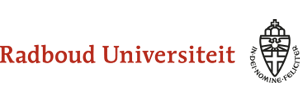American English Phonetics
Another American English Faculty Project
1.2 Spelling as a confusing factor
In this chapter, we first turn to the problem of the spelling. For understandable reasons we are inclined to attach far more authority to the way words are spelled than to the way they are pronounced. This goes for our native language as well as for foreign languages. It is a tendency that will inevitably confuse our thoughts and discussion about the pronunciation of words, because instead of thinking in terms of sounds, we keep thinking in terms of letters.
This is easy enough to demonstrate. Which of the following pairs do you think are pronounced exactly alike?
| 01 | wendde | – | wenden |
| 02 | (ik) teken | – | (een) teken |
| 03 | jou | – | jouw |
| 04 | u | – | uw |
| 05 | ik vil hem | – | ik film |
| 06 | Baarn | – | baren |
| 07 | niet Sien | – | niets zien |
| 08 | hij gaat | – | gaat hij? |
| 09 | kastje | – | kasje |
| 10 | (ik ken) haar | – | (lang) haar |
For a speaker of colloquial Dutch who does not come from a part of the Netherlands to the north or east of the line Apeldoorn-Arnhem, the correct answers are the odd-numbered pairs. (In the north-east of the country, 2 and 6 may sound the same, while 1 will be different).
Also when reading or talking about ’vowels’ (Du: klinkers) and ’consonants’ (Du: medeklinkers), the first thought people often have is of vowel letters and consonant letters. When asked how many vowels English has, or Dutch has, for instance, many people might say ’five’, because in the Roman alphabet, the set of letters used to spell these languages, there are five letters that are commonly used to represent vowels. The correct answer to the question will in fact depend on the particular variety of the language that is chosen, but for the English described in this book it is 20 (which is only two less than the number of consonants in that language). And the answer for the type of Dutch that English is compared with in this book, is 25! So do not fall into traps like these and remember that this book is basically about sounds, not about spelling.
